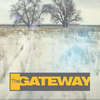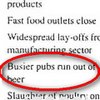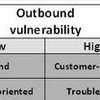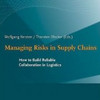 Hosted by news anchor Becky Anderson, the CNN Gateway is a series that goes behind the scenes of the world’s major transport hubs, revealing the logistics that keep goods and people moving. We may not always give it much thought, but suply chains are all around us, and logistics is what makes the world tick. Our global world would not be possible without these hubs, the technology they emply and the people who work there. Even if you consider yourself fairly knowledgable in logistics and supply chain management, I bet there are still new things to learn from watching this series, and this post will present some of the highlights.
Hosted by news anchor Becky Anderson, the CNN Gateway is a series that goes behind the scenes of the world’s major transport hubs, revealing the logistics that keep goods and people moving. We may not always give it much thought, but suply chains are all around us, and logistics is what makes the world tick. Our global world would not be possible without these hubs, the technology they emply and the people who work there. Even if you consider yourself fairly knowledgable in logistics and supply chain management, I bet there are still new things to learn from watching this series, and this post will present some of the highlights.
This is how the series presents itself:
Ever wondered how long it takes from the time a rose grower cuts the stem in Kenya to when it hits the stalls at your local florist? Or how cocoa from West Africa ends up in Hamburg’s port warehouses, ready for distribution to Europe’s chocolate makers? The Gateway reveals all.
While “reveals” may seem like a promotional exaggeration, after watching the videos I cannot stop marvelling at how logistics and supply chains pervade almost every spot in our modern world, and how what we take for granted as we go about our business would not be possible without some fairly advanced background orchestration.
The Aalsmeer flower market is the world’s largest flower auction and where 60% of the worlds flowers on a daily basis, much of this flown in from Kenya and South America, making Amsterdam Schiphol airport an important hub for flowers coming into Europe.
It’s quite impressive to watch the video and to see the sheer size of the premises, let the alone the array of several hundred traders buying their share of flowers with the push of a button.
The Maschen railyard outside Hamburg is Europe’s largest rail marshalling yard, and perhaps Europe’s most important transport hub for rail containers, processing some 3500 waggons or 150 trains up 700 metres long..each and every day.
Goods containers arrive at Hamburgh port, Europe’s second largest container port, are unloaded from the ships and transported 10kms to Maschen, where an army of some 800 people makes sure that every container is loaded onto the right train for its next destination.
Interestingly, Hamburg has changed from being an import hub to being an export hub, with China today being the EU’s second biggest export market, usurping the likes of Japan and Russia and biting at the heels of the United States — for decades Europe’s biggest customer. Apparently, Germany — whose total exports to developing Asia recently overtook those to the U.S. — has been much more successful at adapting to a world where “there will no longer be a single pole of attraction, but multiple poles.”
A couple of reports are centered on Vladivostok, Russia’s major Pacific port and gateway to Asia, where Tokyo Bejing and Hong Kong are closer in reach than farway Moscow.
For sure, Vladivostok is Russia’s commercial capital, situated as it is at the crossroads of international shipping corridors and only a two-hour drive away from China, imports from China are booming. Unsurprisingly there are perhaps more cars with their steering wheel on the right (i.e. Asia-imported cars) than cars with their steering wheel on the left (i.e. Europe-imported cars).
While I cannot present all the videos, I do recommend you to watch every one of the above and the remaining on The Gateway website, see link below. It’s good stuff and full of hands-on knowledge every supply chain professional can and should learn from.
Link
- cnn.com: The Gateway
Related posts
- husdal.com: Supply chains and pallets












